Exchange of Material Test Data
Material test data are usually measured and processed in laboratories. Meta data and evaluated properties are stored in laboratory information systems (LIMS). Raw test data are recorded using test machines, which write their data in proprietary formats. Curves are frequently exported as pictures. Up to now lab reports are usually PDF-Files with some meta-data and pictures. Data cannot be processed digitally to be included in further evaluations like material modelling or aggregated reports. This results in high expenses for data acquisition and digitalization.
The e-coc data structure is designed for the combined transfer of data and PDF-report. It was designed to allow the exchange of multi-dimensional curve data, e.g. tensile test curves with time, force, displacement, stress, strain, temperature or fatigue crack propagation curves with crack growths and stress intensity.
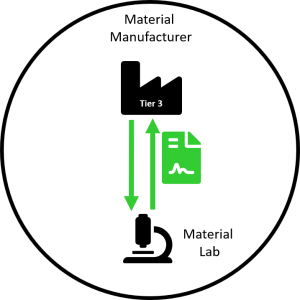
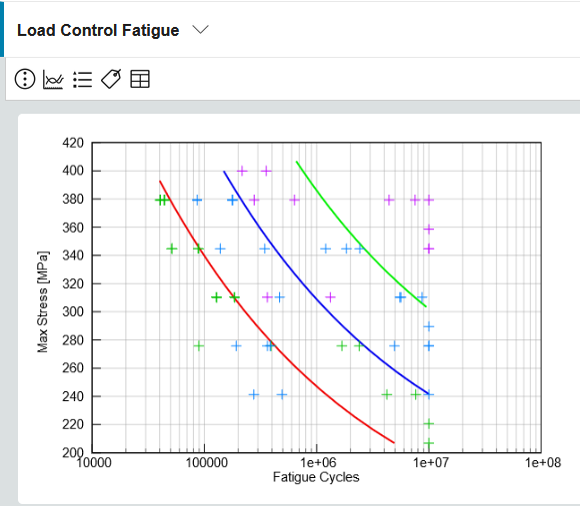
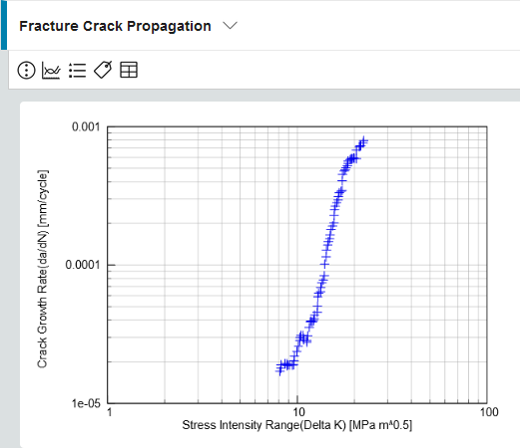
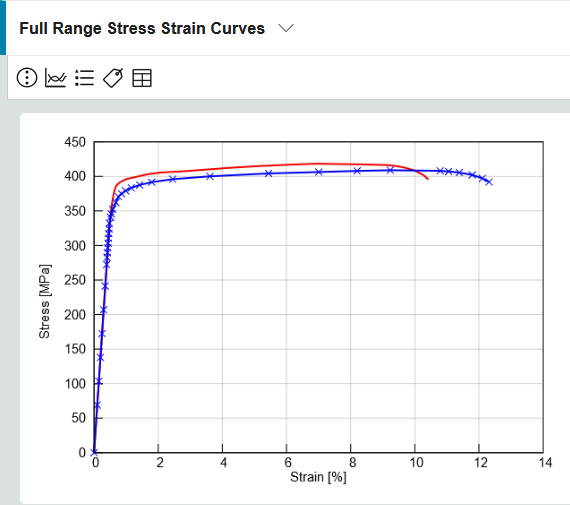
Examplary curve data of material tests, taken from MMPDS (available as a data module in the Matplus EDA materials database system)
Business Items
- Business Items like parties involved, business references are used as in other e-coc data levels.
- For materials test data usually a requester sends a test request to a laboratory together with parts or specimen to be tested. For many tests ERP orders are detailed manually, e.g. using a file attachment which contains all the meta-data, like material designation, part number, heat treatment, etc.
- By using the object of declaration of e-coc data level B, this can be digitallized so that the e-coc data structure supports a closed loop from requester to lab and back to requester
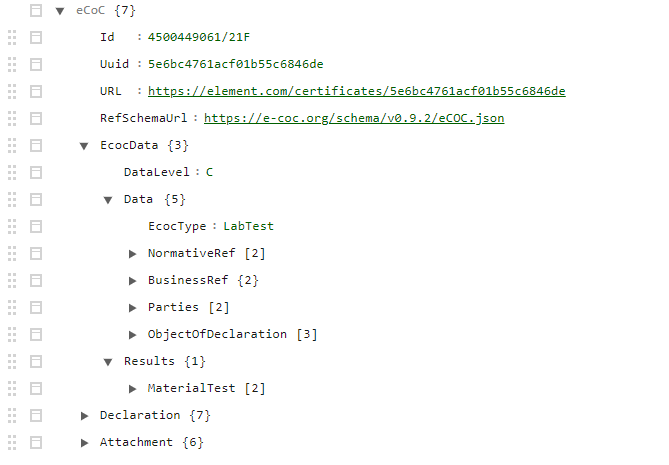
Results
- The results of materials test are stored into the results structure of e-coc data level C.
- There is currently not a single rigid JSON schema for this kind of data but rules which facilitate the bi-lateral exchange of even complex data. On request we can provide some best practice schemas.
- Results are linked to the objects of declaration which contain the materials/parts to be tested and the tests to be performed
- Test data themselves consist of header data and data arrays which are used to store multi-dimensional data tables, e.g. the stress-strain curves of tensile tests.
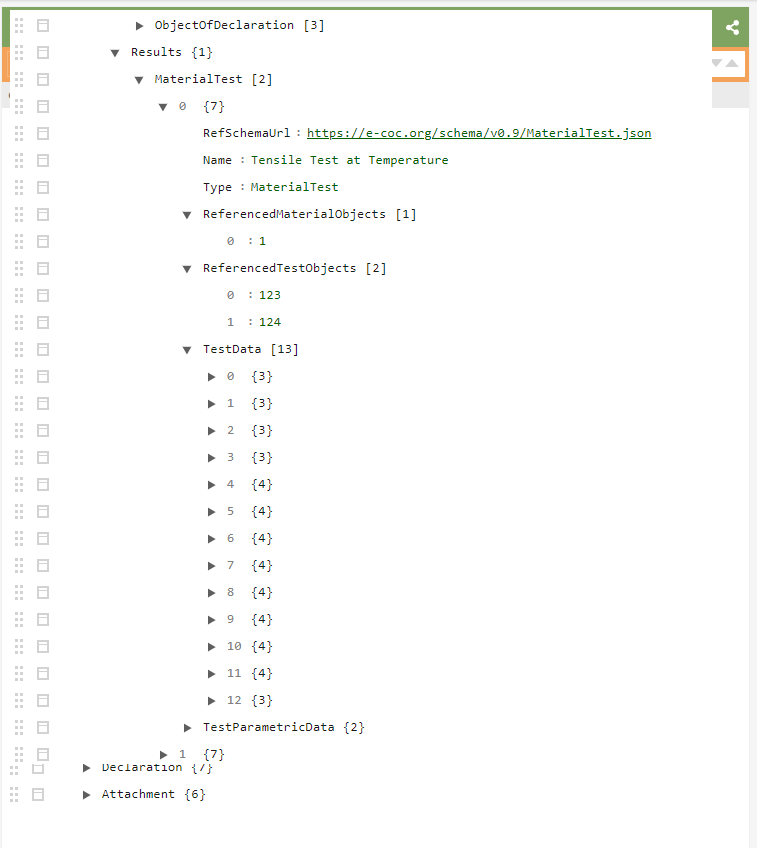
Multi-dimensional data tables
Even data from simple tensile tests consist of several columns: As with most test data the result is a time series with extra columns, like force, displacement, stress, strain.
Each block of Test Data consists of the definition of the
- ParametricArray and the
- ParametricValue
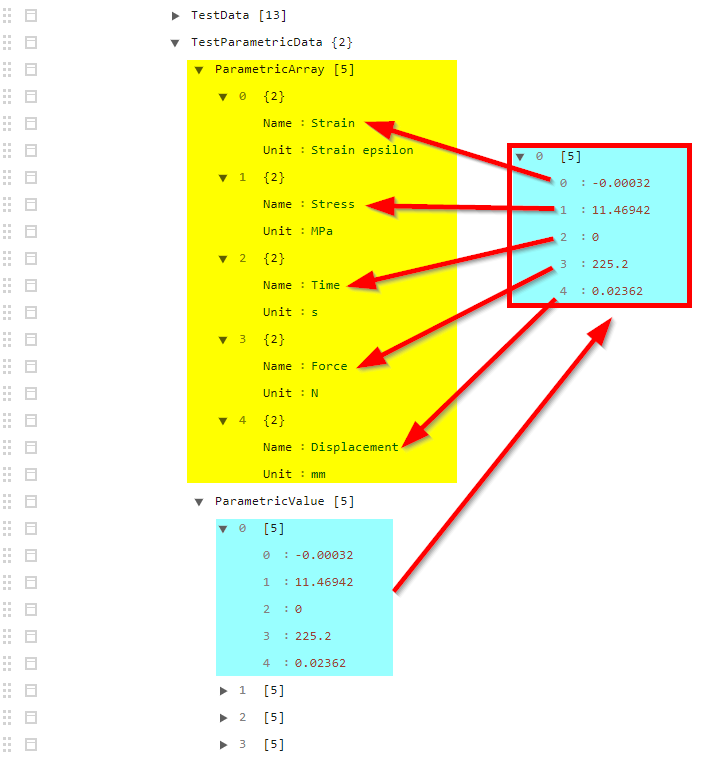
Declaration and Attachment
Declaration and Attachment are the same like in DataLevel B.
Attachment contains the base64 encoded PDF lab report .

Download files
Here you can download the corresponding e-CoC file for the described test report.